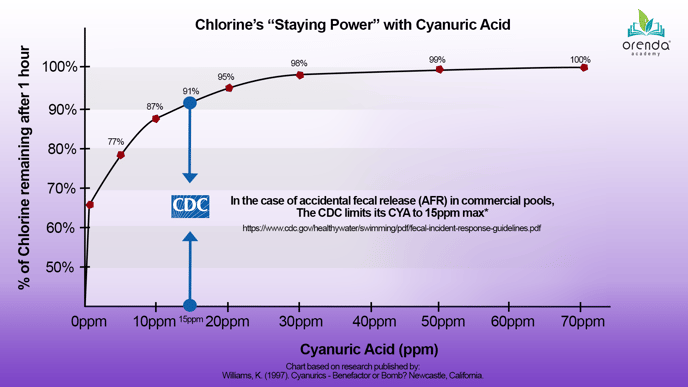What is the ideal Cyanuric Acid (CYA) level for a swimming pool?
The exact ideal CYA level depends on a few specific factors, but in our opinion, every pool should have no more than 50 ppm CYA.
Our fourth pillar of proactive pool care is called minimal CYA. The action step is simple: keep CYA levels below 50 ppm (mg/L).
The ideal level for your pool depends on how the pool is used, the primary chlorine type, and whether its private (residential) or public (commercial). So let's break it down into residential and commercial pools.
Ideal CYA for residential pools
We recommend 30-50 ppm CYA for residential pools. You could go higher, but you would also need to proportionally increase your free chlorine levels to maintain 7.5% of your CYA level in free chlorine. Learn more about the free chlorine to cyanuric acid ratio here.
One of the most common questions we get at Orenda is from customers struggling to keep chlorine levels for a week. Listen:
There's a difference between using chlorine and losing chlorine. CYA protects chlorine from degrading in sunlight, and you don't need much of it to protect the chlorine you have. And since trichlor is about 50-55% cyanuric acid (by weight), CYA levels accumulate.
The more CYA you have, the slower your chlorine. Avoid over-stabilizing your pool.
Ideal CYA for commercial pools
If you're working with a public pool, the risk of a recreational water illness (RWI) is much greater. Therefore you need to optimize chlorine speed for disinfection (...not that you're ignoring this for backyard pools).
The CDC's Model Aquatic Health Code (MAHC) says that commercial pools need to drain their pools in the event of a fecal incident if they have CYA over 15 ppm. This is because CYA slows chlorine's killing speed (therefore increases contact time (CT)).

So for us, it's simple. Commercial pools should stay at 15 ppm or less CYA to comply with the federal MAHC standard.
How to reduce Cyanuric Acid (CYA)
If your water has CYA levels higher than desired, draining and diluting is the easiest, most reliable way to reduce CYA.